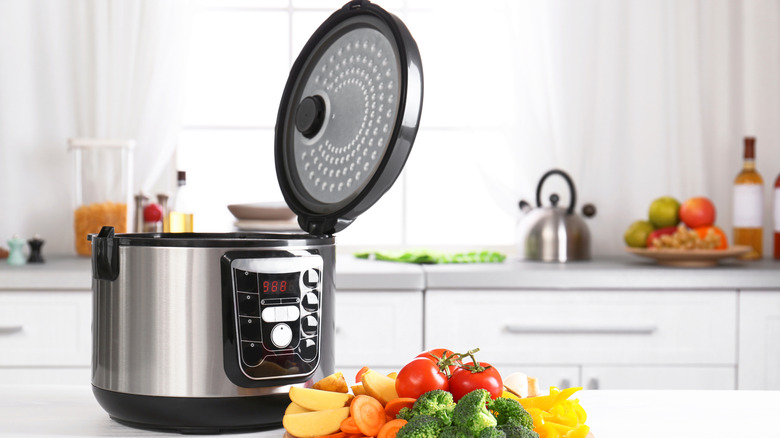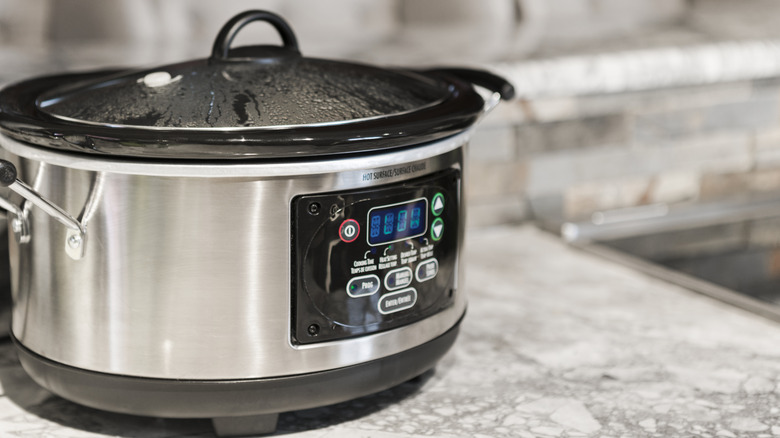The Safety Tip To Remember If Your Slow Cooker Has A Locking Lid
A slow cooker is a wonder of the modern kitchen. Put a slab of pork butt in there with seasonings and spices and hit a button. Come back after a few hours, and you'll have slow-cooked pulled pork that comes apart with the nudge of a fork. Who doesn't like push-button cooking?
If you've bought a brand-new slow cooker, it may come with a glass lid that can be secured to the top of the cooker via latches on the side. It may look like it's supposed to stay on during cooking, but keeping the lid locked while the cooker is working can be a serious safety issue.
When you put the lid on and lock it down, the latches will cause the lid to press down onto the rubber gasket on top of the cooker and seal off the cooker. This will cause the pressure in the cooker's interior to slowly rise as the food releases steam. The pressure won't rise as drastically as in a pressure cooker, but remember, you're cooking for hours here. Over time, the pressure will add up and, at some point, it'll shatter the glass lid and possibly damage the cooker, too. So, in your and the cooker's best interest, keep the locks undone.
Why is there a lid to begin with?
As great as traditional slow cookers are for home cooking, if you have to bring the food anywhere (like to an office party or a potluck), you have to transfer it to separate containers. This can be a rather inconvenient and messy affair. That's where cook-and-carry slow cookers come in. These come with a lockable glass lid that, when paired with a liquid-proof gasket, prevents spills during transport. Simply clamp down the latches, grab the side handles, and you can confidently bring your beef stroganoff wherever.
The locks aren't helpful during cooking, though. While there's a small vent to release some steam during travel, it's not enough to prevent pressure buildup over long periods. If you're making slow cooker cinnamon rolls, for instance, all that extra moisture will turn the rolls into a gooey, mushy mess. Instead, just place the lid on top without engaging the latches, leaving a small gap (about a quarter inch) for the steam to vent. This way, you'll get all the benefits of covering your steaming dish without any risks.

